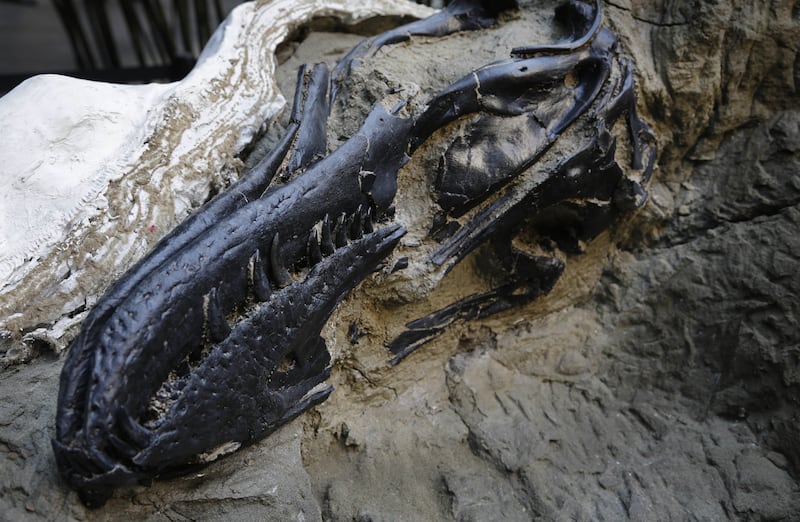A new study may have just ended a decades-long dinosaur debate. Research published this week in Nature suggests that fossils once thought to be teenage Tyrannosaurus rex may actually belong to a completely separate, and much smaller, species: the Nanotyrannus lancensis.
For decades, paleontologists have argued over whether these small-bodied tyrannosaurs were adolescent T. rexes or a different species entirely.
According to National Geographic, the mystery began in the 1940s, when a slim skull was unearthed in Montana. It wasn’t until 1988 the fossil was classified as Nanotyrannus lancensis, and ever since, scientists have been split. Paleontologists have debated whether the small, lean fossils of tyrannosaurs are a teenage version of the iconic T. rex, or an entirely different species?
That question gained new life with the discovery of the famous “Dueling Dinosaurs” fossil: an incredibly preserved pair of intertwined dinosaur skeletons, found in Montana in 2006. After years of being privately owned, 67-million-year-old fossil made its way to the North Carolina Museum of Natural Sciences in 2020, giving scientists their first chance to study the remains.
Since the fossil has been in the museum, it has been studied with paleontologists Lindsay Zanno and James Napoli leading the research on the newly acquired specimen.
On Oct. 30, they published their findings in Nature. “We knew the specimen was exceptional,” Zanno said. “We did not realize it would turn decades of research about T. rex on its head.”
According to the study, the fossil wasn’t adolescent at all, but a fully grown dinosaur, weighing about 1,500 pounds after two decades of growth.
“The anatomy of Nanotyrannus, from its higher tooth count, enlarged hands, shorter tail, unique pattern of cranial nerves and sinuses and smaller adult body size, is incompatible with the hypothesis that this skeleton is a teenage T rex,” Zanno added, according to The Guardian.
The recent findings add to the long-standing rift within the paleontological community. Some researchers, like University of Edinburgh paleontologist Steve Brusatte, have long argued that Nanotyrannus is simply a teenage T. rex. However, he acknowledges the most recent case for the existence of the Nanotyrannus is undeniably real, according to National Geographic.
“It’s wonderful when new evidence shows that some of our cherished notions — my cherished notions as a tyrannosaur researcher — are likely to be wrong,” he adds. “That’s science, and with fossils, we always have to be humble with the reality that we are dealing with such small sample sizes, such meagre clues from millions of years ago, and each new discovery has the possibility of upending conventional wisdom.”
Zanno and Napoli hope their work will finally close the book on one of paleontology’s biggest mysteries. As Zenno emphasized per The Guardian their goal was to write a paper that would “end the debate.”

